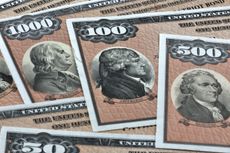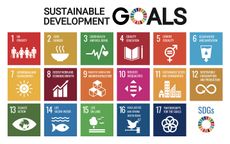Where Commodities Fit in Your Portfolio
After a stunning boom-and-bust cycle, commodities may be in for a period of relative stability, giving investors a less intimidating entry point.
By Jennifer Woods, Special to CNBC.com
Surprising Stock Market IndicatorsAmerica's Biggest Categories of Personal DebtHow To Open A Swiss Bank Account
Worah says a key factor in his assessment is a rare balance in supply and demand.

Sign up for Kiplinger’s Free E-Newsletters
Profit and prosper with the best of expert advice on investing, taxes, retirement, personal finance and more - straight to your e-mail.
Profit and prosper with the best of expert advice - straight to your e-mail.
Jim Bower, president of Bower Trading Inc. also expects a relatively steady performance from commodities over the next six to nine months.
"What I am looking for in this market right now is a healing mechanism," says Bower, alluding to the boom-and-bust cycle of the past year.
Bower says investors are now working to "cycle out toxins" and discover true prices for the actual commodities. During such a phase, prices often run up to the top of their trading range and then fall back down until they are finished healing, he says.
That said, all commodities are not created equal, so to speak. Here's how Worah and Bower see certain groups playing out.
- Natural Gas. Worah is most positive on natural gas, saying it has been one of the worst performing groups as investor demand fell off a cliff at the same time that some fairly cheap new sources were discovered. With supply evening out, however, a bounce in prices is possible.
- Crude Oil. Worah says supply has met demand, even though there is still a lot of crude out there. "I'm not bearish but I don't think it's going to explode to upside," he says.
- Grains and Soybeans. Bower believes these are among the most interesting right now, though future performance is tough to call. While there have been some recent cutbacks in supply, which bodes well for prices, a lot depends on future weather trends.
- Industrial Metals. Copper and zinc have been doing very well, largely because of Chinese imports, says Worah, but aluminum is very abundant and easy to make, so avoid it.
- Precious Metals. The price of gold most often rises and falls along with inflation expectations, says Worah, and there's enough disagreement about that right now. Worah adds there's likely to be a devaluation of paper assets, perhaps in a year or so, and that would boost real assets, including gold.
- Pork and Cattle. The recent swine flu outbreak has had a short-term negative impact on pork and to some degree beef, but Bower believes many people are interpreting the situation incorrectly, "You can't contract this virus through pork, particularly, cooked pork."
[page break]
If commodities sound right for you, Worah recommends an asset allocation of 3 percent to 5 percent.
The best options for retail investors are diversified baskets of commodities such as mutual funds or exchange traded funds, ETFS, which tend to pose less risk than futures contracts traded on exchanges while offering a more direct play than the stock of commodity-focused companies.
| Row 0 - Cell 0 | Surprising Stock Market Indicators |
| Row 1 - Cell 0 | America's Biggest Categories of Personal Debt |
| Row 2 - Cell 0 | How To Open A Swiss Bank Account |
Hilary Fazzone, a mutual fund analyst with Morningstar, says the primary commodity indices are the Dow Jones-UBS Commodity Indexes (group and individual), which are composed of actual commodities traded on US exchanges; and the S&P Goldman Sachs Commodities Index, which is a composite index of commodity sector returns.
One of the commodity funds that Fazzone likes is the Pimco Commodity Real Return fund, managed by Worah. This fund uses swaps to get exposure to the Dow Jones Commodity Index and allocates some funds to a portfolio of TIPs. Fazzone says the fund has also been repackaged for the Harbor family of funds as the Harbor Commodity Real Return Strategy (HACMX). It has the same holdings as the Pimco version, though it carries a lower expense ratio.
Another fund that Fazzone is keeping an eye on is the Oppenheimer Commodity Strategy Total Return fund (QRAAX), which tracks the S&P Goldman Sachs Commodities Index. This fund also invests partially in fixed income. (After taking a big beating in riskier investments, it recently made its fixed income allocation more conservative.
There are also a handful of ETFs that represent broad baskets of commodities.
Probably the two ETFs that are most comparable to the mutual funds mentioned are the iPath Dow Jones AIG Commodity Index Total Return ETN (DJP) and the iShares S&P GSCI Commodity ETF (GSG). Another popular commodities ETF is the Deutsche Bank Commodities ETF (DBC), which tracks the Deutsche Bank Liquid Commodity Index - Excess Return Optimum Yield.
ETFs are often a more cost effective option than comparable mutual funds. According to Fazzone, the average expense ratio of a mutual fund in Morningstar's natural resource category is 1.45 percent (including both load and no load funds) while the expense ratio for DJP and GSG is 0.75 percent and DBC is 0.83 percent. (Note: Commission costs are incurred when you trade ETFs.)
Performance comparisons are also relevant. Actively managed mutual funds, however, have the potential for greater gains or losses, says Fazzone, because their portfolio managers are not only tracking an index but also making sub sector bets, while most ETFs simply track an index.
Investors, of course, need to make the usual investment analysis in picking funds, as well as learn about how commodities markets work. Prices can swing far and fast.
The commodities market, warns Bower, "can be dangerous and difficult to trade."
Get breaking business news and real-time stock quotes on CNBC.com.
-
 Starbucks BOGO and New Sweet and Spicy Drinks
Starbucks BOGO and New Sweet and Spicy DrinksFor a limited time, Starbucks is announcing four new "swicy" drinks that are both spicy and sweet.
By Kathryn Pomroy Published
-
 Stock Market Today: Dow Slips After Travelers' Earnings Miss
Stock Market Today: Dow Slips After Travelers' Earnings MissThe property and casualty insurer posted a bottom-line miss as catastrophe losses spiked.
By Karee Venema Published
-
 Best Banks for High-Net-Worth Clients
Best Banks for High-Net-Worth Clientswealth management Kiplinger's 2023 list of the best banks for higher-net-worth clients.
By Lisa Gerstner Published
-
 Stock Market Holidays in 2024: NYSE, NASDAQ and Wall Street Holidays
Stock Market Holidays in 2024: NYSE, NASDAQ and Wall Street HolidaysMarkets When are the stock market holidays? Take a look at which days the NYSE, Nasdaq and bond markets are off in 2024.
By Kyle Woodley Last updated
-
 Stock Market Trading Hours: What Time Is the Stock Market Open Today?
Stock Market Trading Hours: What Time Is the Stock Market Open Today?Markets When does the market open? It's true the stock market does have regular hours, but trading doesn't necessarily stop when the major exchanges close.
By Michael DeSenne Last updated
-
 Bogleheads Stay the Course
Bogleheads Stay the CourseBears and market volatility don’t scare these die-hard Vanguard investors.
By Kim Clark Published
-
 I-Bond Rate Is 5.27% for Next Six Months
I-Bond Rate Is 5.27% for Next Six MonthsInvesting for Income I-Bonds issued November 1, 2023 through April 30, 2024 will have a rate of 5.27%.
By David Muhlbaum Last updated
-
 What Are I-Bonds?
What Are I-Bonds?savings bonds Inflation has made Series I savings bonds enormously popular with risk-averse investors. So how do they work?
By Lisa Gerstner Last updated
-
 This New Sustainable ETF’s Pitch? Give Back Profits.
This New Sustainable ETF’s Pitch? Give Back Profits.investing Newday’s ETF partners with UNICEF and other groups.
By Ellen Kennedy Published
-
 As the Market Falls, New Retirees Need a Plan
As the Market Falls, New Retirees Need a Planretirement If you’re in the early stages of your retirement, you’re likely in a rough spot watching your portfolio shrink. We have some strategies to make the best of things.
By David Rodeck Published